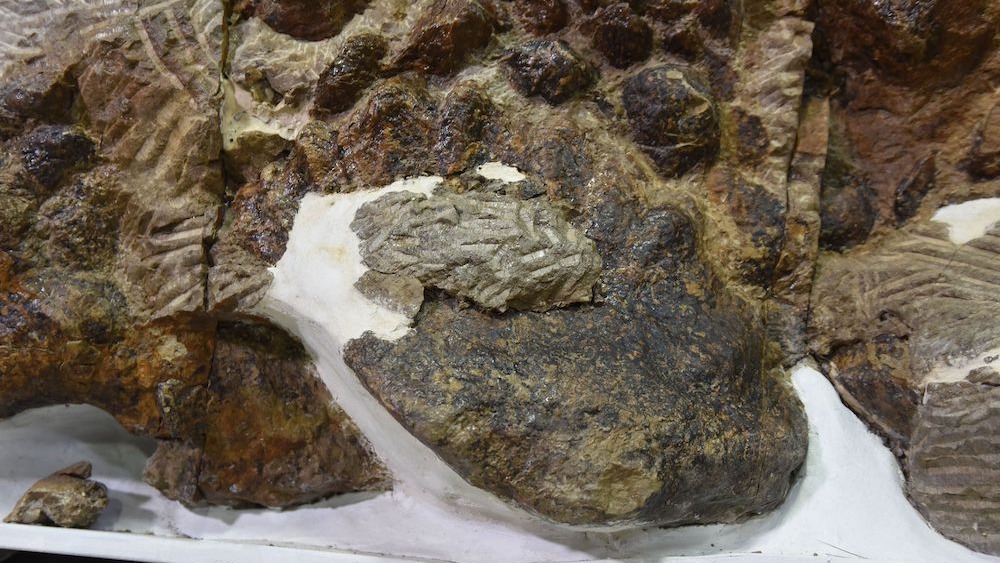'Jousting ankylosaurs' whacked their peers with their 'sledgehammer-like tails'
Not only did ankylosaurs like "Zuul" use their tails as weapons against potential predators, but they also used them to battle their peers.

Equipped with massive tails studded with spikes, ankylosaurs were heavily armored herbivores that could do real damage in a fight. Paleontologists once thought that these tank-like dinosaurs used their tail clubs solely to fight off predators, but a new study published Dec. 6 in the journal Biology Letters reveals that they also bashed each other in a show of dominance.
For the investigation, a team of North American paleontologists examined Zuul crurivastator (named after the fictional monster of the same name in the 1984 movie "Ghostbusters"), the most complete fossilized ankylosaur known whose remains are on display at the Royal Ontario Museum (ROM) in Toronto, Canada. Its species name, Crurivastator, Latin for "destroyer of shins," was inspired by the fearsome club at the end of its 10-foot-long (3 meter) tail.
Measuring 20 feet long (6 m) and weighing 5,500 pounds (2,500 kg), the 76 million-year-old specimen from the Cretaceous period (145 million to 66 million years ago) contains several broken spikes along its flanks. Sections of fossilized skin on its flanks also show that Zuul's side wounds healed while the dinosaur was still alive.
Related: Belly up: Why ankylosaurs are always found upside down
"The fossilized skin preservation over top of the damaged bony plates blew me away — seeing the healing reflected in the soft tissue is something really special about Zuul," David Evans, the study's co-author and Temerty Chair and curator of vertebrate paleontology at ROM, told Live Science in an email.
He added, "We have all the bony armor plates and spikes still covered in fossilized skin, completely preserved over its entire body. Zuul gives us a remarkable picture of what these animals looked like when they were alive. Seeing where the damaged armor occurred relative to the undamaged normal armor meant we could study the pattern of pathology across the entire body."

For years, scientists believed that ankylosaurs only used their "sledgehammer-like" tails to swat away predators, including one of the most infamous killers in the dinosaur kingdom: Tyrannosaurus rex. This is true, however the injuries inflicted on Zuul add another "piece to the puzzle" and serve as an example of sexual selection similar to antlers on deer or horns on antelopes, according to a statement.
Sign up for the Live Science daily newsletter now
Get the world’s most fascinating discoveries delivered straight to your inbox.
"Biological structures like this often served a number of different functions, and survival is key," Evans said. "We grew up thinking that the iconic tail clubs of these armored dinosaurs evolved to fend off predators, namely the tyrannosaurs, with the assumption that these were sluggish animals that lived their adult lives in relative solitude. Our new model of combat-driven tail club evolution not only overturns this anti-predator dogma, but also paints ankylosaurs as more socially complex animals, battling with other members of their species for dominance over territory or to impress mates — as suggested for other plant eating dinosaurs."
He added, "This idea of jousting ankylosaurs transforms them from the dinosaurian battle tanks to the dinosaurian knights in shining armor."
Jennifer Nalewicki is former Live Science staff writer and Salt Lake City-based journalist whose work has been featured in The New York Times, Smithsonian Magazine, Scientific American, Popular Mechanics and more. She covers several science topics from planet Earth to paleontology and archaeology to health and culture. Prior to freelancing, Jennifer held an Editor role at Time Inc. Jennifer has a bachelor's degree in Journalism from The University of Texas at Austin.









